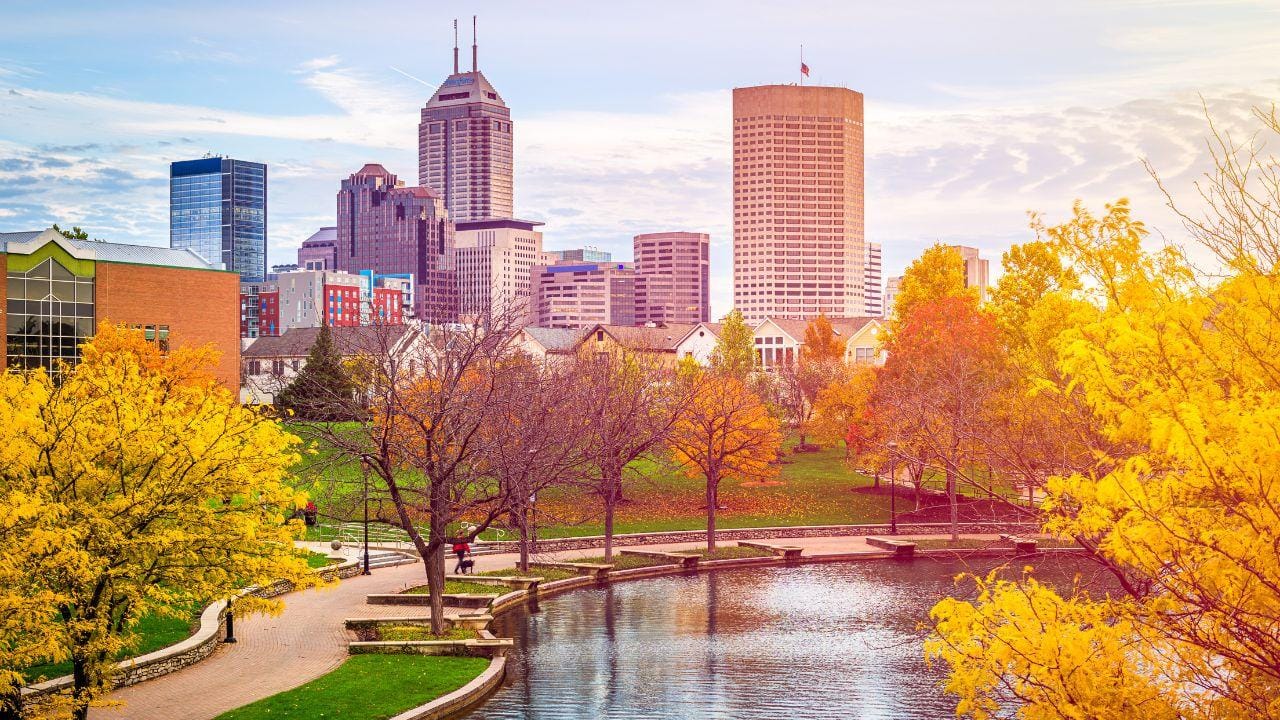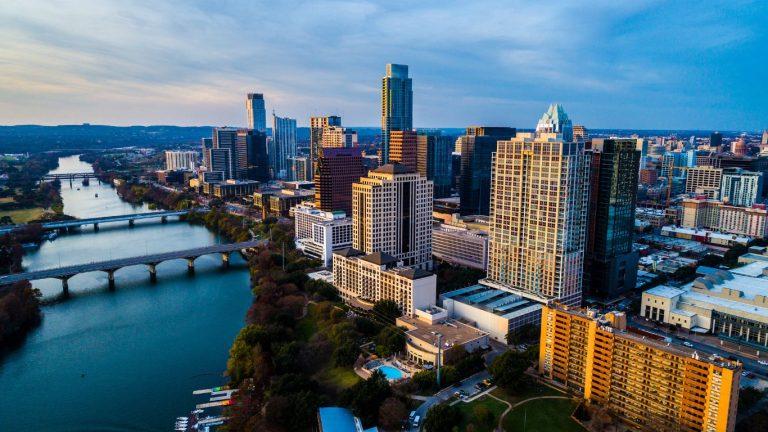6 Cheapest Places to Live in Indiana: Affordable Living Options
Cheapest Places to Live in Indiana: Affordable Living Options
Looking for affordable living options in Indiana? You’ve come to the right place! In this article, we will explore the cheapest places to live in Indiana, providing you with valuable insights and information to help you make an informed decision about your next home. Whether you’re a student, a young professional, or a family looking to settle down, Indiana offers various towns and cities that combine affordability with a high quality of life. So let’s dive in and discover the hidden gems of the Hoosier State!
In our Indiana article, we recommend checking out the video “Moving to Indiana – 8 Best Places to live Indiana 2023” for an informative visual guide to some of the top places to live in the state.
Indianapolis
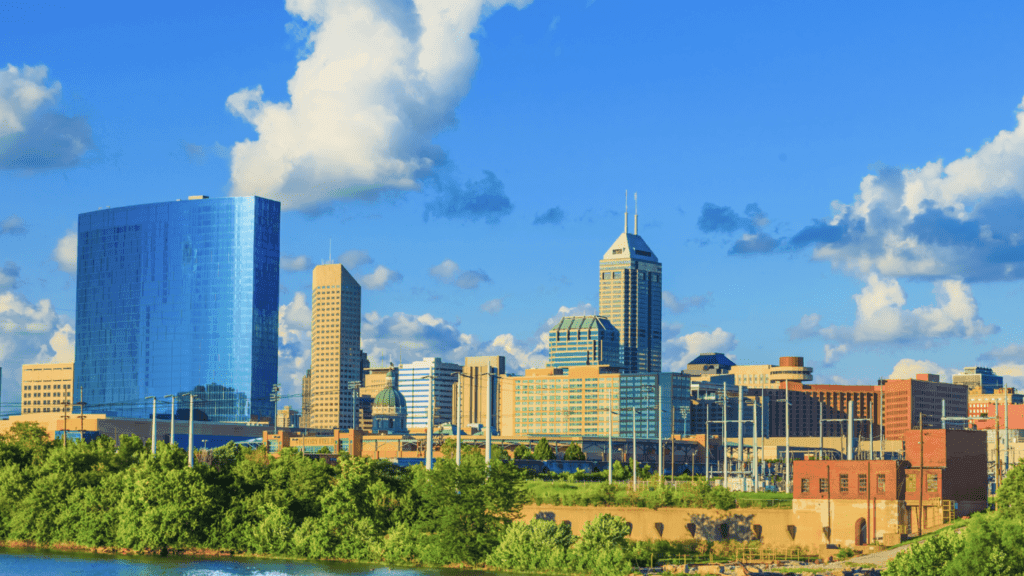
Indianapolis, the capital city of Indiana, is a vibrant and diverse metropolitan area that offers a low cost of living compared to other major cities in the United States. With a median home price below the national average, affordable housing options are abundant in Indianapolis. The city boasts a thriving job market, excellent educational institutions, and a rich cultural scene, making it an attractive destination for individuals and families seeking affordable living without compromising on amenities.
Indianapolis, the capital city of Indiana, is a vibrant and diverse metropolis that offers a range of affordable living options. It is renowned for its rich history, thriving sports culture, and friendly Midwestern charm. With a population of approximately 900,000 people, Indianapolis is the largest city in Indiana and the 16th largest city in the United States.
When it comes to finding affordable places to live in Indiana, Indianapolis is often regarded as one of the cheapest options. The city offers a variety of neighborhoods and housing options that cater to different budgets and preferences. Whether you’re looking for a cozy apartment in the downtown area or a spacious home in the suburbs, Indianapolis has options to suit various needs.
The median home price in Indianapolis is relatively affordable compared to other major cities in the country. As of my knowledge cutoff in September 2021, the median home price in Indianapolis was around $170,000. However, it’s important to note that real estate prices may fluctuate, so it’s advisable to check the most recent data for updated figures.
In terms of home rental options, Indianapolis provides a range of choices for individuals or families looking to rent. From apartments and condominiums to townhouses and single-family homes, there are numerous rental properties available throughout the city. Rental prices vary depending on factors such as location, size, and amenities.
Indianapolis boasts a plethora of parks and recreational areas, offering residents and visitors ample opportunities for outdoor activities. Some notable parks include Eagle Creek Park, which is one of the largest municipal parks in the country, and White River State Park, located in the heart of downtown Indianapolis. These parks provide beautiful green spaces, walking trails, picnic areas, and opportunities for boating and fishing.
When it comes to healthcare, Indianapolis is home to several renowned hospitals and medical centers. The city has a robust healthcare infrastructure, ensuring that residents have access to quality medical care. Some notable hospitals in Indianapolis include Indiana University Health Methodist Hospital, St. Vincent Indianapolis Hospital, and Eskenazi Health.
If you’re considering moving to Indianapolis, you may also want to explore the 6 Cheapest Places to Live in Indiana for affordable living options.
Fun facts about Indianapolis:
- Sports Capital: Indianapolis is often referred to as the “Racing Capital of the World” due to its rich motorsports heritage. The city is home to the iconic Indianapolis Motor Speedway, which hosts the prestigious Indianapolis 500 and Brickyard 400 races.
- Cultural Hub: Indianapolis is a hub for arts and culture, with numerous museums, theaters, and art galleries. The Indianapolis Museum of Art, the Children’s Museum of Indianapolis, and the Indiana State Museum are popular attractions that showcase art, history, and science.
- Monument Circle: The city center of Indianapolis features the iconic Monument Circle, a historic landmark that commemorates the soldiers and sailors of Indiana who served in the Civil War. At the center of the circle stands the Indiana Soldiers and Sailors Monument, which offers stunning views of the city from its observation deck.
- Vibrant Downtown: Downtown Indianapolis offers a vibrant mix of entertainment, dining, and shopping options. The bustling Wholesale District is known for its eclectic range of restaurants, bars, and nightlife venues.
- Indiana State Fair: Every summer, Indianapolis hosts the Indiana State Fair, a beloved event that showcases agriculture, entertainment, and culinary delights. The fair attracts visitors from across the state and beyond, offering a fun-filled experience for all ages.
Indianapolis, with its affordable living options, rich culture, and abundance of recreational opportunities, provides a welcoming and attractive environment for residents and visitors alike.
Fort Wayne
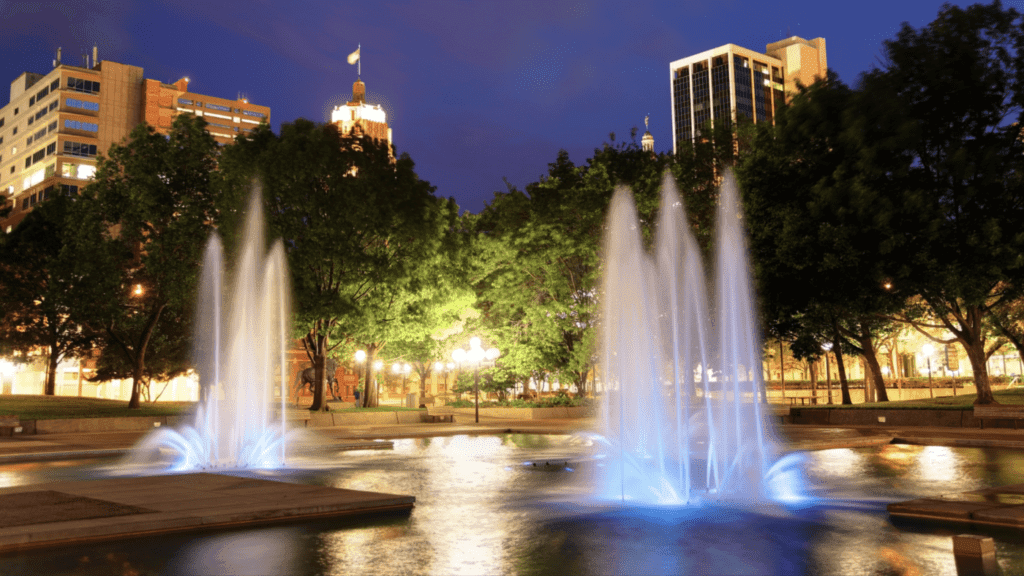
Fort Wayne, located in northeastern Indiana, is another affordable city worth considering. With a cost of living well below the national average, Fort Wayne offers affordable housing, low property taxes, and a range of amenities. The city is known for its strong sense of community, beautiful parks, and excellent healthcare facilities. Additionally, Fort Wayne’s job market has been steadily growing, providing ample opportunities for employment.
Fort Wayne, located in northeastern Indiana, is a city that offers affordable living options and a range of amenities for its residents. With a population of around 270,000 people, it is the second-largest city in Indiana.
When it comes to affordable places to live in Indiana, Fort Wayne often ranks among the top choices. The city provides a lower cost of living compared to many other cities in the state and the country as a whole. Fort Wayne offers a variety of neighborhoods and housing options, including apartments, townhouses, and single-family homes, catering to different budgets and preferences.
The median home price in Fort Wayne is relatively affordable, making it an attractive option for homebuyers. As of my knowledge cutoff in September 2021, the median home price in Fort Wayne was around $130,000. However, real estate prices may vary over time, so it’s recommended to consult up-to-date data for the most accurate information.
For those looking to rent, Fort Wayne also provides various rental options. Apartments, duplexes, and rental homes are available throughout the city, offering a range of choices to suit different needs and budgets. Rental prices in Fort Wayne tend to be lower compared to larger metropolitan areas, making it an affordable place to live for renters.
Fort Wayne offers several parks and recreational areas where residents can enjoy outdoor activities and connect with nature. Some notable parks include Franke Park, which features trails, playgrounds, and a zoo, and Foster Park, known for its picturesque gardens and golf course. Additionally, the Rivergreenway trail system provides opportunities for walking, running, and biking along the city’s rivers and green spaces.
The city of Fort Wayne is home to several well-regarded hospitals and medical centers, ensuring that residents have access to quality healthcare services. Some notable hospitals in the area include Parkview Regional Medical Center, Lutheran Hospital, and Dupont Hospital.
Fun facts about Fort Wayne:
- Three Rivers: Fort Wayne is situated at the confluence of three rivers—the St. Joseph River, the St. Marys River, and the Maumee River. The city’s location along these waterways has played a significant role in its history and development.
- Fort Wayne Children’s Zoo: The Fort Wayne Children’s Zoo is a popular attraction in the city, known for its focus on education, conservation, and animal exhibits. The zoo offers a wide range of animal species and interactive experiences, making it a favorite destination for families.
- Fort Wayne Museum of Art: The Fort Wayne Museum of Art houses a diverse collection of American art, including works by renowned artists such as Grant Wood and Winslow Homer. The museum hosts exhibitions, educational programs, and community events throughout the year.
- Historic Landmarks: Fort Wayne boasts several historic landmarks and buildings that reflect its rich heritage. The Old Fort, a replica of the original fort built in the early 19th century, provides insights into the city’s early history. The Embassy Theatre, a beautifully restored 1920s theater, hosts a variety of performances and events.
- Festivals and Events: Fort Wayne hosts numerous festivals and events throughout the year, showcasing the city’s vibrant culture and community spirit. The Three Rivers Festival, Johnny Appleseed Festival, and Greek Festival are among the popular annual celebrations that attract locals and visitors alike.
Fort Wayne, with its affordable cost of living, range of housing options, and access to recreational facilities and healthcare services, offers a welcoming and affordable environment for residents to call home.
South Bend

Situated in the northern part of the state, South Bend is home to the renowned University of Notre Dame and offers a mix of affordable housing options. The city has a low unemployment rate and a cost of living that is lower than the national average, making it an attractive choice for individuals and families looking for affordable living. South Bend also offers a variety of recreational activities, cultural events, and a vibrant downtown area.
South Bend, located in northern Indiana, is a city known for its affordability and rich cultural heritage. With a population of approximately 100,000 people, it is the fourth-largest city in Indiana.
South Bend is often recognized as one of the cheapest places to live in Indiana. The city offers a lower cost of living compared to larger metropolitan areas, making it an attractive option for individuals and families looking for affordable housing options. South Bend provides a mix of neighborhoods, ranging from historic districts to suburban areas, with diverse housing options such as apartments, townhouses, and single-family homes.
The median home price in South Bend is relatively affordable compared to the national average. As of my knowledge cutoff in September 2021, the median home price in South Bend was around $85,000. It’s important to note that real estate prices may fluctuate, so it’s advisable to consult the most recent data to obtain accurate figures.
For those interested in renting, South Bend offers a range of rental options to suit different preferences and budgets. Apartments, duplexes, and rental homes are available throughout the city, providing affordable choices for individuals and families looking for temporary or long-term housing solutions.
South Bend features several parks and green spaces where residents can enjoy outdoor activities and recreational pursuits. Potawatomi Park is a popular destination, offering beautiful gardens, walking paths, and a zoo. The East Race Waterway provides opportunities for kayaking and rafting, while the St. Joseph River offers scenic views and fishing spots.
The city of South Bend is home to reputable hospitals and healthcare facilities, ensuring residents have access to quality medical care. Some notable hospitals in the area include Memorial Hospital of South Bend and Saint Joseph Regional Medical Center.
Fun facts about South Bend:
- University of Notre Dame: South Bend is famous for being the home of the University of Notre Dame, a prestigious Catholic university known for its academics and storied football program. The university’s iconic Golden Dome and the Basilica of the Sacred Heart are recognizable landmarks in the city.
- Studebaker National Museum: South Bend has a rich automotive history, and the Studebaker National Museum celebrates this heritage. The museum showcases a collection of vintage vehicles and exhibits that highlight the Studebaker Corporation’s impact on the automotive industry.
- South Bend Chocolate Company: Chocolate lovers will delight in the South Bend Chocolate Company, a local chocolate shop known for its delectable treats and handmade chocolates. The company offers tours and tastings, allowing visitors to learn about the chocolate-making process.
- The Morris Performing Arts Center: The Morris Performing Arts Center is a beautifully restored theater that hosts a variety of performances, including Broadway shows, concerts, and cultural events. Its elegant architecture and rich history make it a cultural centerpiece in South Bend.
- South Bend River Lights: The South Bend River Lights is an interactive light installation along the St. Joseph River. The colorful LED lights illuminate the riverfront, creating a captivating visual display that changes with the seasons and special events.
South Bend, with its affordable cost of living, diverse housing options, and cultural attractions, provides a welcoming and budget-friendly environment for residents and visitors alike.
Evansville
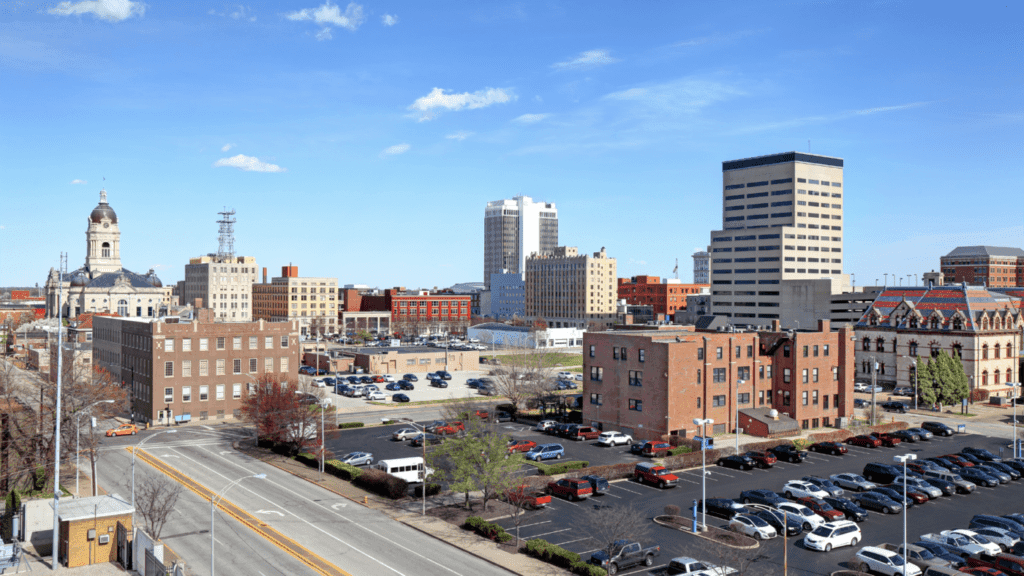
Evansville, located in the southwestern corner of Indiana, is a hidden gem when it comes to affordable living. The city has a low cost of living, affordable housing options, and a strong job market. Evansville is known for its scenic beauty, with the Ohio River running alongside the city, providing residents with opportunities for outdoor activities and recreation. The city also has a rich history and a thriving arts and culture scene.
Evansville, situated in southwestern Indiana, is a city known for its affordability and rich history. With a population of approximately 120,000 people, it is the third-largest city in Indiana.
Evansville is often regarded as one of the cheapest places to live in Indiana. The city offers a lower cost of living compared to many other cities, making it an attractive option for individuals and families seeking affordable housing. Evansville provides a variety of neighborhoods, including historic districts and suburban areas, with diverse housing options such as apartments, townhouses, and single-family homes.
The median home price in Evansville is relatively affordable compared to national averages. As of my knowledge cutoff in September 2021, the median home price in Evansville was around $120,000. However, real estate prices may vary, so it’s advisable to consult up-to-date data for the most accurate information.
For those interested in renting, Evansville offers a range of rental options to suit different budgets and preferences. Apartments, duplexes, and rental homes are available throughout the city, providing affordable choices for individuals and families looking for temporary or long-term housing solutions.
Evansville features several parks and recreational areas where residents can enjoy outdoor activities and connect with nature. Wesselman Woods Nature Preserve is a popular destination, offering hiking trails, wildlife observation, and educational programs. Garvin Park is another notable park in the city, providing sports fields, picnic areas, and a playground.
The city of Evansville is home to several hospitals and medical centers, ensuring that residents have access to quality healthcare. Some notable hospitals in the area include Deaconess Hospital and St. Vincent Evansville Hospital.
Fun facts about Evansville:
- Ohio River: Evansville is situated on the banks of the Ohio River, one of the major waterways in the United States. The river provides scenic views and recreational opportunities for residents, including boating, fishing, and riverfront events.
- West Side Nut Club Fall Festival: The West Side Nut Club Fall Festival is a popular annual event in Evansville, attracting thousands of visitors. The festival features a variety of food vendors, carnival rides, live entertainment, and parades, making it a highlight of the city’s social calendar.
- Mesker Park Zoo and Botanic Garden: The Mesker Park Zoo and Botanic Garden is a family-friendly attraction that showcases a wide range of animals and plant species. It offers interactive exhibits, educational programs, and beautifully landscaped gardens.
- Historic Districts: Evansville boasts several historic districts that reflect its rich architectural heritage. The Haynie’s Corner Arts District and Riverside Historic District are notable areas known for their well-preserved historic buildings, art galleries, and local shops.
- Evansville Museum of Arts, History, and Science: The Evansville Museum is a cultural hub that houses a diverse collection of art, historical artifacts, and interactive science exhibits. The museum also hosts traveling exhibitions and educational programs for visitors of all ages.
Evansville, with its affordable cost of living, diverse housing options, and cultural attractions, offers a welcoming and budget-friendly environment for residents and visitors alike.
Lafayette
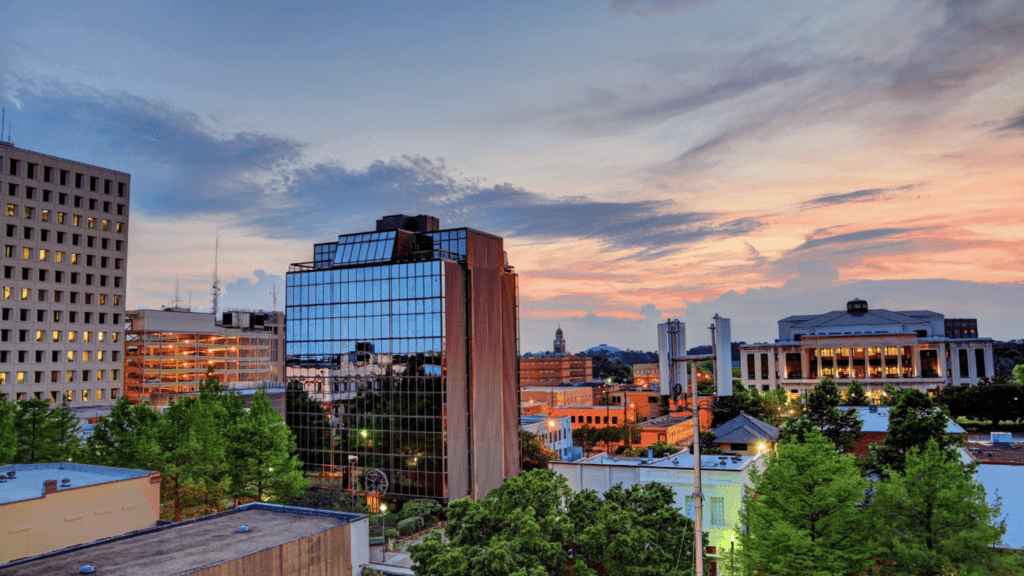
Lafayette, situated in the heart of Indiana, offers a mix of affordability and quality living. The city has a low cost of living and affordable housing options, making it an attractive destination for individuals and families. Lafayette is home to Purdue University, which contributes to a vibrant and diverse community. The city also boasts a range of recreational activities, including parks, trails, and sports facilities.
Lafayette, located in north-central Indiana, is a city known for its affordability and thriving community. With a population of approximately 75,000 people, it is one of the larger cities in Indiana.
Lafayette is often considered one of the cheapest places to live in Indiana. The city offers a lower cost of living compared to many other urban areas, making it an attractive option for individuals and families seeking affordable housing. Lafayette provides a range of neighborhoods with diverse housing options, including apartments, townhouses, and single-family homes, catering to different budgets and preferences.
The median home price in Lafayette is relatively affordable compared to national averages. As of my knowledge cutoff in September 2021, the median home price in Lafayette was around $145,000. However, real estate prices may fluctuate, so it’s advisable to consult up-to-date data for the most accurate information.
For those interested in renting, Lafayette offers various rental options to suit different budgets and needs. Apartments, duplexes, and rental homes are available throughout the city, providing affordable choices for individuals and families looking for temporary or long-term housing solutions.
Lafayette features several parks and green spaces that offer opportunities for outdoor activities and recreation. Columbian Park is a popular destination, offering a zoo, aquatic center, playgrounds, and picnic areas. Prophetstown State Park, located just outside Lafayette, provides hiking and biking trails, camping facilities, and opportunities to explore nature.
The city of Lafayette is home to several hospitals and medical centers, ensuring that residents have access to quality healthcare services. Some notable hospitals in the area include IU Health Arnett Hospital and Franciscan Health Lafayette East.
Fun facts about Lafayette:
- Purdue University: Lafayette is home to Purdue University, one of the leading research universities in the United States. The university brings a vibrant and diverse student population to the city and contributes to its cultural and economic landscape.
- Feast of the Hunters’ Moon: The Feast of the Hunters’ Moon is an annual historical reenactment and festival that takes place in Lafayette. The event celebrates the 18th-century fur trade era with period costumes, live music, demonstrations, and traditional food.
- Tippecanoe Battlefield: The Tippecanoe Battlefield, located near Lafayette, is a historic site that marks the location of the Battle of Tippecanoe, a significant conflict during the War of 1812. Visitors can explore the battlefield, learn about the history of the area, and visit the Tippecanoe Battlefield Museum.
- Art and Cultural Scene: Lafayette has a thriving arts and cultural scene, with numerous galleries, theaters, and music venues. The Long Center for the Performing Arts hosts a variety of live performances, including concerts, theater productions, and dance shows.
- Festivals and Events: Lafayette hosts a range of festivals and events throughout the year. The Mosey Down Main Street festival, held during the summer months, features live music, food vendors, and local artisans. Other events include the Global Fest, Uptown Jazz & Blues Festival, and the Indiana Fiddlers’ Gathering.
Lafayette, with its affordable cost of living, diverse housing options, and cultural attractions, offers a welcoming and budget-friendly environment for residents and visitors alike.
Muncie
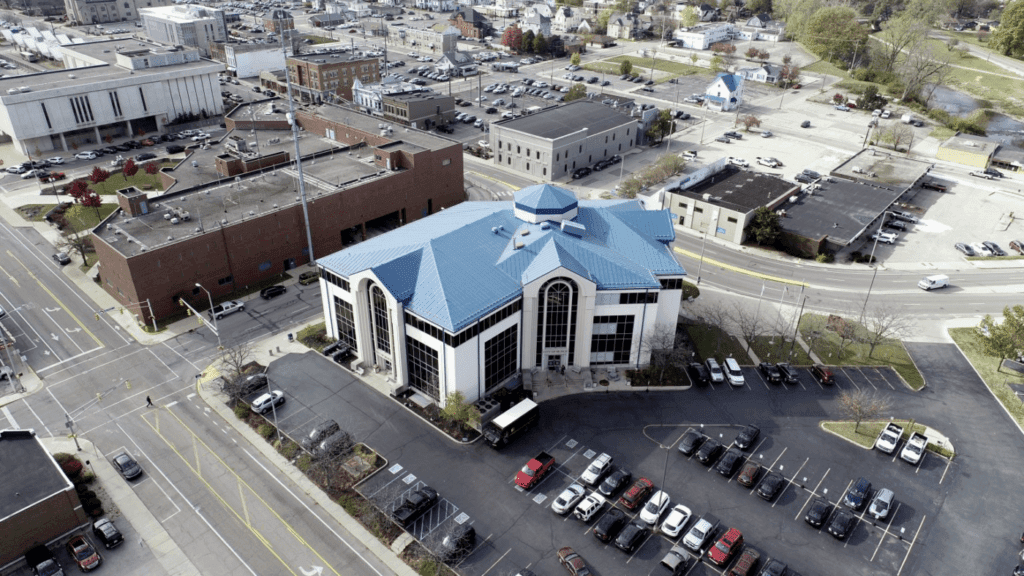
Muncie, located in eastern Indiana, is a city that combines affordability with a strong sense of community. The cost of living in Muncie is below the national average, and housing options are affordable. The city is home to Ball State University, providing residents with access to educational and cultural opportunities. Muncie also offers a variety of parks, museums, and recreational activities for all ages.
Muncie, located in east-central Indiana, is a city known for its affordability and vibrant community. With a population of approximately 70,000 people, it is one of the larger cities in the state.
Muncie is often recognized as one of the cheapest places to live in Indiana. The city offers a lower cost of living compared to many other urban areas, making it an attractive option for individuals and families seeking affordable housing. Muncie provides a range of neighborhoods with diverse housing options, including apartments, townhouses, and single-family homes, catering to different budgets and preferences.
The median home price in Muncie is relatively affordable compared to national averages. As of my knowledge cutoff in September 2021, the median home price in Muncie was around $80,000. However, real estate prices may vary, so it’s advisable to consult up-to-date data for the most accurate information.
For those interested in renting, Muncie offers various rental options to suit different budgets and needs. Apartments, duplexes, and rental homes are available throughout the city, providing affordable choices for individuals and families looking for temporary or long-term housing solutions.
Muncie features several parks and recreational areas that offer opportunities for outdoor activities and leisure. Prairie Creek Reservoir and Park is a popular destination, providing fishing, boating, camping, and hiking trails. Minnetrista, a cultural center and museum, features beautiful gardens, walking paths, and educational exhibits.
The city of Muncie is home to several hospitals and medical centers, ensuring that residents have access to quality healthcare services. Some notable hospitals in the area include IU Health Ball Memorial Hospital and Meridian Health Services.
Fun facts about Muncie:
- Ball State University: Muncie is home to Ball State University, a renowned public university known for its strong programs in education, architecture, business, and more. The university brings a lively college atmosphere to the city and offers various cultural and educational events throughout the year.
- The Muncie Makers Market: The Muncie Makers Market is a weekly outdoor market that showcases local artisans, craftsmen, and farmers. Visitors can browse a wide variety of handmade products, fresh produce, and delicious treats while supporting local businesses.
- David Owsley Museum of Art: Located on the campus of Ball State University, the David Owsley Museum of Art houses an extensive collection of art from various time periods and cultures. The museum offers free admission and provides a cultural and educational experience for visitors of all ages.
- Cardinal Greenway: The Cardinal Greenway is a 62-mile rail-trail that stretches from Marion to Richmond, passing through Muncie. It provides opportunities for walking, biking, and rollerblading, allowing residents and visitors to explore the scenic beauty of the region.
- Muncie Civic Theatre: The Muncie Civic Theatre is a community theater that produces a wide range of plays and musicals throughout the year. It offers opportunities for local actors, directors, and volunteers to showcase their talents and entertain audiences.
Muncie, with its affordable cost of living, diverse housing options, and cultural attractions, offers a welcoming and budget-friendly environment for residents and visitors alike.
Frequently Asked Questions (FAQs)
FAQ 1: What factors make a place affordable to live in?
Affordability is determined by various factors such as housing costs, utility expenses, transportation costs, healthcare expenses, and the overall cost of goods and services in a particular area. When considering the affordability of a place, it’s essential to look at the median home price, rental costs, property taxes, and the availability of affordable amenities.
FAQ 2: Are there job opportunities in the cheapest places to live in Indiana?
Yes, many of the cheapest places to live in Indiana offer job opportunities across different industries. Cities like Indianapolis, Fort Wayne, and South Bend have thriving job markets with a range of employment options. Additionally, the presence of universities and colleges in some of these cities contributes to job growth and opportunities.
FAQ 3: Are there good educational institutions in these affordable places?
Absolutely! Indiana is home to several excellent educational institutions, both at the K-12 level and higher education. Many of the cheapest places to live in Indiana, such as Indianapolis and South Bend, have reputable public and private schools. Additionally, cities like South Bend and Lafayette are home to prestigious universities, including the University of Notre Dame and Purdue University, respectively.
FAQ 4: Can I find affordable recreational activities in these places?
Yes, the cheapest places to live in Indiana offer a range of affordable recreational activities. Whether you enjoy outdoor activities like hiking, biking, or exploring parks, or prefer cultural experiences such as visiting museums, attending concerts, or exploring local festivals, you’ll find plenty of options in these cities. Indiana’s rich history and natural beauty provide numerous opportunities for affordable and enjoyable recreation.
FAQ 5: How can I find affordable housing in Indiana?
To find affordable housing in Indiana, consider working with local real estate agents who specialize in the area you’re interested in. They can help you navigate the market and find housing options within your budget. Additionally, online real estate websites and rental platforms can provide you with a comprehensive list of available properties. Don’t forget to explore different neighborhoods and suburbs to find the best fit for your needs.
FAQ 6: Are there any cultural events in these affordable places?
Yes, the cheapest places to live in Indiana have vibrant cultural scenes with a wide range of events and festivals. Cities like Indianapolis host annual events such as the Indianapolis 500, while South Bend offers cultural experiences centered around the University of Notre Dame. From art galleries to live performances, there’s something for everyone to enjoy.
Conclusion
Indiana offers several affordable living options that combine affordability, quality of life, and a range of amenities. Whether you’re seeking a city with a thriving job market, access to educational institutions, or a strong sense of community, Indiana has it all. Cities like Indianapolis, Fort Wayne, South Bend, Evansville, Lafayette, and Muncie provide affordable housing, recreational activities, and cultural experiences. Explore these hidden gems of Indiana and find the perfect place to call home!

